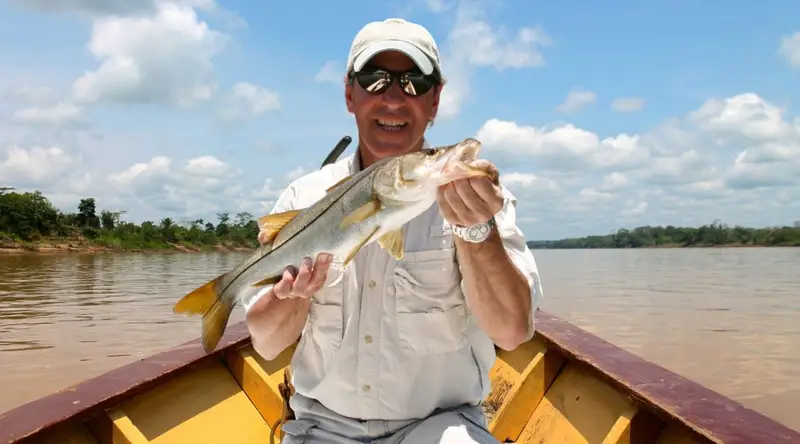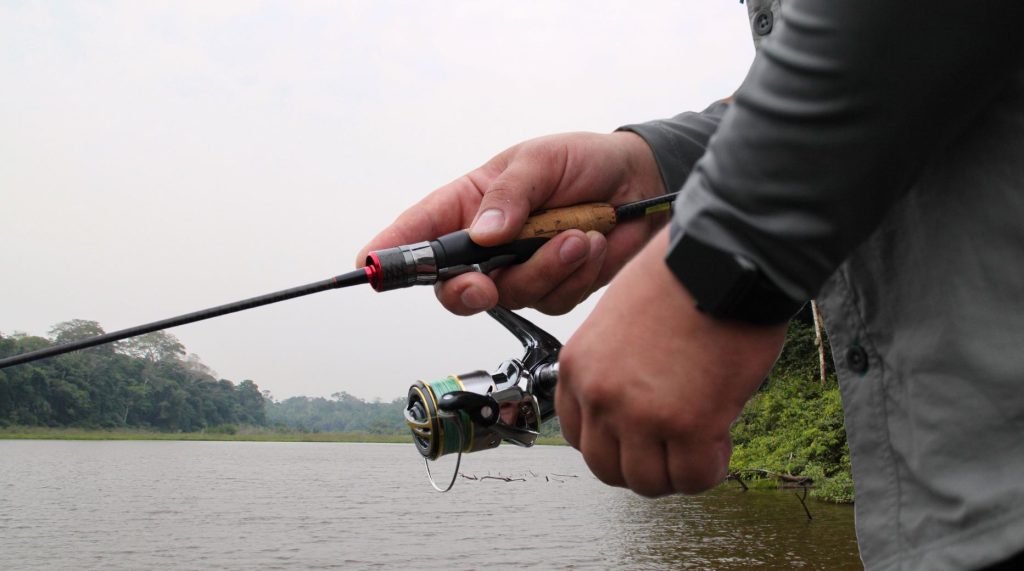Very close to the city of Cuzco, is one of the most pristine and virgin areas in the entire Amazon rainforest, a place that is home to more species of animals than any other place on the planet.
Its creation dates back to 1990, we are talking about the Tambopata National Reserve, which is located east and south of Puerto Maldonado. Within its environs are 1.5 million hectares (3.5 million acres) that extend through the regions of Madre de Dios and Puno. The Tambopata Reserve has been the subject of numerous television documentaries due to the vast number of species that inhabit this Amazonian area.
The National Park protects not only species, but also a wide diversity of landscapes including pristine oxbow lakes with their iconic herons, kingfishers, caimans and giant otters, as well as spectacular waterfalls with swimming holes, incredible clay licks visited by hundreds of macaws, monkeys and tapirs, palm-filled swamps where colonies of birds nest, and rivers with white sandy beaches for camping. All these wonders attract a large crowd of visitors, scientists and wildlife photographers, definitely a paradisiacal destination for nature lovers.
Like all the animals you will find in the reserve, the fish are wild and fierce, big and strong. Among the species of fish you will find are the Payara, Tucunaré, the wolf fish and many more. Fishing in the Tambopata Reserve is a very interesting activity, where you can enjoy the exciting bites, fights and jumps of these fierce fish in one of the largest rainforests in the world.
- The River: In Puerto Maldonado, the capital of the department of Madre de Dios is the confluence of the Madre de Dios and Tambopata rivers. The waters of the Tambopata River are born in the Puno region and receive a large number of tributary rivers. The water is light brown and warm in the dry season.
- The Climate: During your visit you will find a dry and sunny climate from June to October and extremely humid during the rainy season from November to May.
- The Fishing: Thanks to its strategic location and the confluence of several streams, the waters of the Tambopata River will offer you an immense variety of very interesting fish such as Payaras, Pacu (Giant Piranha), Catfish (Zungaros, Piros, Surubim, etc.) Usually in sport fishing in the area it is customary to fish the Payara with spinning and casting equipment. There are many black volcanic rocks in the river and the Payara hunts sardines very close to the shore. The technique commonly used is to cast from this point lures such as magnum or silver rapalas, rebel fastrac or jawbreakers.
- Pacu only take fruit and fish meat, so we use sardines as bait, hooks and weights with multifilament lines on the reels. They are really strong and effective at doing their job.
- We use the same technique with all the catfish.
- To do a typical fishing tour in Peru, what a sport fisherman needs is based on a good pair of boots, t-shirts, cap, windbreaker, a box of bait belt, a 7 feet medium spinning rod for Payara, a 7 feet medium heavy rod for Pacu and catfish, different sinking and trolling lures, plenty of natural bait, hooks and weights.
- Season : The fishing season in the area starts at the beginning of July and ends at the end of October. The best times for this activity are between August, September and October. Full moon is not recommended.
Tambopata Fishing Tours
You can find fishing trip itineraries with the following structure: 8 Days, 7 Nights with 5 Fishing Days, most of these include your reception at the airport, accommodation and transportation to and from your lodge in Tambopata as well as your transportation to the designated fishing spots. You will have a professional guide who will meet with the group and assist you at all times.
The packages include a rod and reel with 2 fishing lures, although you should always consult this beforehand and have your own equipment available:
The fishing technique used in this sport in the Tambopata area is based on casting and spinning from the beautiful black volcanic rocks in the Tambopata River. The Payara is the most common fish you will find in these waters, you should know that it is a strong fish, very fast, with a big tail and a pair of big canines in the lower jaw and two holes in the upper jaw. They live in extremely fast waters and take both lures and flies with a wild force. Fishing for these incredible fish is an intense and satisfying experience, and when you manage to catch your first Payara the feeling of gratification will be unique.

Fishing rod suggestions
You should consider packing at least 2 medium-heavy to heavy action rods, 7 ½ to 9 ft. Baitcasting or Spinning. For fly fishermen, a slightly heavier fly rod, 9 to 10, is suggested.
Reel Suggestions
Like rods, at least 3 reels rated for 200 yards of 20-pound line, similar to a Shimano Bait runner 4500 or 6500, Fin Nor 12 or the Penn 6500.
Line Suggestions
All types of lines from 30 pounds to 65 pounds, multifilament such as Spider Wire, Power Pro or a simple Dacron is much more advisable. Good leaders and swivels are highly suggested, bring plenty of them.
LURES
All types of lures are recommended such as Rapala Magnum, Rapala Countdown, Rebel Fasttrac, Spoonbill and bigs windcheater, as well as all types of lures suitable for fast water and that can be submerged quickly. Due to the dark color of the water, lure colors such as fire tigers, oranges, redheads and chartreuses are favored for their increased visibility.
Plastic lures will be punctured by the payara’s teeth and lose their action; wooden lures work best.
Don’t worry about lure size, 4 ½ inches and up is fine. Look especially at the hooks, they need to be extra strong.
For fly fishermen: Payara take a variety of fast moving currents, but prefer a heavy 4/0 hook for saltwater tarpon. A heavy single leader with sturdy tips is essential.
Clothing, equipment and other items to carry:
- Long sleeve fishing shirts (3)
- Long pants for fishing (3)
- Short sleeve shirts for camping or fishing (2)
- Camping or fishing shorts (2)
- T-shirts (2)
- Caps (2)
- Sunscreen lotion
- Tennis or deck shoes (2)
- Camera or camcorder
- Film
- Pen Light
- Medicines and medicines
- Good repellent
- Toiletries





